Skin tone is affected by lifestyle, profession, nutrition and habits, lack of sleep and the environment, even stress and heredity. In addition to general causes, there are diseases that provoke an unhealthy complexion. An experienced doctor, during the first examination of a patient, can immediately suspect problems in one or another area of the body if he notices a sallow, bluish, yellow or green complexion in the patient. In an article on Estet-portal.com, we’ll look at how an unhealthy complexion is associated with diseases and decipher the map of diseases based on skin tone.
What does the term “unhealthy complexion” mean?
This concept refers to color deviations of human skin. Ideally, when a person does not complain of pain or illness and feels great, the skin tone will be within the range of pink, beige and yellow, and a healthy blush may appear on the cheeks. Each organism develops and functions in its own way, so skin color will vary depending on individual indicators.
In Chinese medicine, there are 5 unhealthy skin tones: white, black and green - mean pain, red and yellow - fullness, white - absence.
For each of the five skin colors, problems with organs are distributed:
- red is the heart,
- white – pulmonary system,
- black – kidneys,
- yellow – spleen,
- green – liver.
Unhealthy complexion and disease map
Dark complexion is characterized by ailments associated with the thyroid gland, liver, adrenal glands, and heart. If there is an unhealthy complexion towards a uniform dark shade, this may mean adrenal insufficiency, the development of renal pathologies, or bacterial endocarditis.
If the face is covered with blurry brown spots, this indicates a malfunction of the thyroid gland. When the face becomes covered with dark spots, and in addition the patient constantly feels numbness in the fingers, coldness of the extremities, and “goosebumps” on the body - these are sure signs of systemic scleroderma.
Leopard syndrome is characterized by the appearance of dark brown spots. Clearly defined spots on the skin may be a symptom of nevus syndrome.
Black spots on the skin
Black spots near the cheekbones and wings of the nose or on the entire face mean problems with the kidneys and bladder. Blackness may appear due to a decrease in the amount of B vitamin - PP or nicotinic acid. This disease is called pellagra. Also, dark, almost black spots appear due to hypersensitivity to ultraviolet radiation - xeroderma pigmentosum.

Blue complexion
This shade may appear during treatment with Cordarone. In addition, a blue complexion may result from the development of cardiopulmonary diseases:
- heart failure;
- asthma;
- acute pneumonia;
- tuberculosis;
- pulmonary embolism;
- a sharp decrease in blood pressure;
- heart defects;
- chronic bronchitis;
- pleurisy;
- pneumothorax.
Skin redness
Often red spots on the face indicate a person who abuses alcohol. In addition, redness of the skin on the face may indicate the development of:
- arterial hypertension;
- erythrocytosis;
- carbon monoxide poisoning;
- allergic reaction;
- rosacea;
- scarlet fever;
- pneumonia;
- sinusitis.
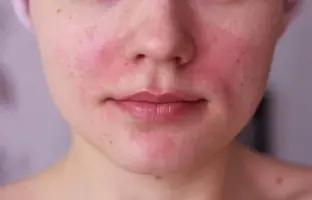
Earthy skin color
An unhealthy complexion (sallow and gray tones) may not always indicate problems. You are most likely to “earn” this color if you don’t get enough sleep, abuse cigarettes and alcohol, constantly be in a suffocating room, eat unhealthy foods and lead an unhealthy lifestyle.
It is possible that sallow skin color may be the first symptom:
- thyroid dysfunction;
- oncological nature of the disease;
- sepsis;
- HIV infections.
Excessive pallor
Pale skin is characteristic of those people who often diet, fast, eat little healthy food, and drink little liquid.
Unhealthy complexion and pallor indicate the following possible diseases and pathological conditions:
- associated with blood loss (ectopic pregnancy, ulcer, endometriosis, internal bleeding);
- vascular spasms (angina pectoris, cancer, heart defects, aortic aneurysm);
- diabetes;
- anemia.
Unhealthy complexion is the first “call” of the body due to the pathological development of the disease. Great attention should be paid to the reasons for the appearance of a yellow complexion, which may be associated with jaundice. It is possible and necessary to prevent the further development of many diseases by promptly consulting a doctor.
Any change in skin tone, if it did not occur under the influence of sunlight, is a serious signal of a disruption in the functioning of internal organs.
So, for example, if the gastrointestinal tract is disrupted, the shade of the face may change from healthy to gray; it may turn blue if there is impaired blood circulation, diseases of the cardiovascular system or respiratory failure; in addition, a violet hue indicates congenital heart disease, and a yellow hue indicates liver diseases.
Gray facial skin - a disease or a consequence of bad habits
A sudden and noticeable change in complexion tone from natural and healthy to gray is most often a sign of dysfunction digestive system. At best, your face may turn gray due to banal constipation or poor nutrition, at worst, due to gastritis or the development of a stomach ulcer. It is hardly possible to independently diagnose the disease on the basis of dyschrony alone, so in this situation it is better to go to an appointment with a gastroenterologist.
In addition, gray facial skin does not always portend illness. Often, against the background of smoking, sedentary work and constant stress, people's blood circulation is impaired and blood vessels narrow, which is also manifested by a deterioration in complexion.
Earthy tint and sharp darkening of the skin - pancreatic disease or oncology
Changes of this kind indicate more serious illnesses. Often, of course, an earthy tint appears due to diseases of the pancreas, adrenal glands, or against the background of long-term use of antibiotics, but if such options are excluded, then the best recommendation in this case would be to turn to modern medicine. Diagnosis of the disease by the skin and on the basis of examinations will allow you to correctly and accurately determine the cause of the change in complexion, as well as timely diagnose the disease that provoked it.
Blue skin color – cyanosis disease
The skin acquires a bluish and sometimes dark purple tint when the blood is insufficiently oxygenated and blood circulation slows down. Such symptoms indicate cyanosis, a disease that combines many disorders of the cardiovascular and respiratory systems.
It happens that cyanosis occurs due to hypothermia. Then, mainly the limbs acquire a blue tint as a result of deterioration of blood circulation in the damaged areas.
Bruises on the skin – diseases of the cardiovascular and respiratory systems
It is in the form of the formation of bluish areas and bluish areas of the mucous membranes that diseases such as heart disease and gas exchange disorders in the lungs make themselves felt. Such changes, however, can provoke the formation of methemoglobin against the background of intoxication and poisoning.
Cyanosis - purple skin disease
The appearance of dark shades or spots on the face and body (purple or cast iron color) indicates increased airiness of the lungs, pulmonary artery sclerosis or congenital heart disease. In any case, if you notice any of the above symptoms, you should immediately consult a doctor.
Vasculitis is a disease of blood vessels in the skin.
This disease involves damage to the blood vessels and tissues of the damaged organ. If the skin vessels are affected, the main symptoms of the disease will be redness, rash and itching. Vasculitis can also affect the circulatory system of the brain, which causes a stroke, the heart, which increases the risk of heart attack, etc., quite often small hemorrhages under the skin are a sign of vasculitis of other organs.
The main symptoms of this disease include: general weakness, fever, loss of appetite, weight loss, rash and itching, joint pain.
A similar syndrome can also occur with systemic lupus erythematosus, rheumatoid arthritis and other diseases characterized by damage to connective tissue.
Cuperosis is a vascular skin disease
Couperosis appears in the form of small red vascular mesh or so-called “spiders” on the cheeks, chin and nose when the blood vessels dilate against the background of increased blood circulation. At the same time, the connective tissue squeezes the vessels from the outside, which makes them more visible on the face. This disease occurs among older people, as well as among those with thin and sensitive skin.
Couperosis can be treated either in a cosmetology salon or using traditional methods. Although the first method allows you to get rid of the signs of rosacea in the shortest possible time. But in case of lack of funds or opportunities - facial massage. This way you can normalize blood circulation and tone the blood vessels and muscles of the face. In addition, supplement your diet with foods or dietary supplements rich in vitamins C, P, K, antioxidants, Omega 3 and 6 fatty acids - they strengthen the walls of blood vessels and help normalize blood circulation.
Yellow skin – liver disease
Most often, yellowing of the face and body is accompanied by a change in the shade of the eye sclera, mucous membranes, especially under the tongue, feet and palms. At the same time, the color of the urine changes - it acquires a rich dark shade.
Such changes most often occur against the background of increased levels of carotene or bilirubin. In the first case, the skin can become yellow if you follow a diet consisting of oranges or carrots for a long time. If these did not occur, then most likely the matter is an increase in the content of bilirubin - a bile pigment that appears as a result of the breakdown of hemoglobin. The latter is responsible for saturating the blood with oxygen and transporting nutrients not only to skin cells, but throughout the body. When there is a decrease in hemoglobin and an increase in bilirubin, changes occur not only in the layers of the dermis, but also in the liver. Then there is a risk of jaundice. In addition, yellowness may indicate diseases such as hepatitis, cirrhosis of the liver, the formation of cysts, as well as disorders of the gallbladder and biliary tract.
You keep peering into the mirror - trying in vain to understand why your skin has become gray, sickly in appearance, has lost its natural pinkish-matte tint, has ceased to be elastic, smooth and fresh. Perhaps the reason is in the lifestyle, or maybe some diseases are to blame. Now let's try to figure out why the color of your face suddenly turned gray.
Crazy health
Let's start with health problems that can affect your complexion.
Digestive failure
Often a grayish face is the first “swallow” indicating problems in the gastrointestinal tract. Especially if it is pancreatitis and inflammation of the gallbladder (cholecystitis).
But perhaps everything is not so scary, because your complexion can become sallow when you overuse antibiotics, for example the same “antidiarrheal” chloramphenicol. Just give up harmful medications and the “graying” will quickly pass.
If your complexion has turned grey, you should first consult a dermatocosmetologist.
Enlarged epidermis
The epidermis is the top layer of skin, the “last barrier” to the outside world. If the body's metabolism is disturbed, it may begin to produce too much fat. It will stick together dead skin particles and prevent them from peeling off calmly. This is how the epidermis “grows fat.” Peeling helps eliminate the problem (at least temporarily). But keep in mind that too frequent peelings will harm your skin color even more and disrupt its lipid balance.
Women with any skin type (oily, combination, dry) can turn gray.
Hypothyroidism
The skin may become dull and gray in color if the thyroid gland does not produce hormones in the required quantities. Other typical signs of this problem are brittle nails and hair loss.
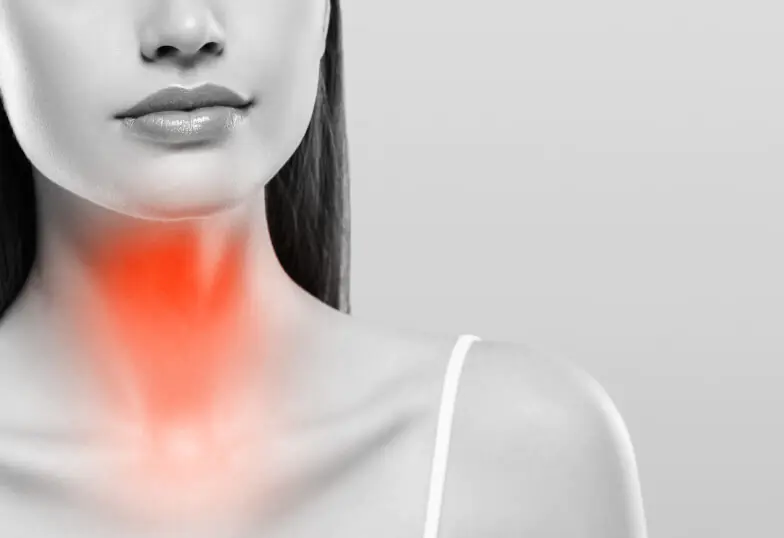


To determine exactly why your face has turned gray, your doctor may prescribe you to undergo an examination of your internal organs and do a biochemical blood test.
Wrong lifestyle and bad habits
Are you addicted to cigarettes and still live in an ecological disaster zone in a metropolis? In this case, the gray color and facial sagging are easy to explain. Quit smoking and get out into nature more often. Then the amount of carbon monoxide in the blood will decrease, the blood vessels will dilate, the pores will clear, and the skin will breathe easier. Gradually, the gray color will go away, and along with it, wrinkles, sunken cheeks, increased dryness and other unattractive external signs of a smoker will disappear.
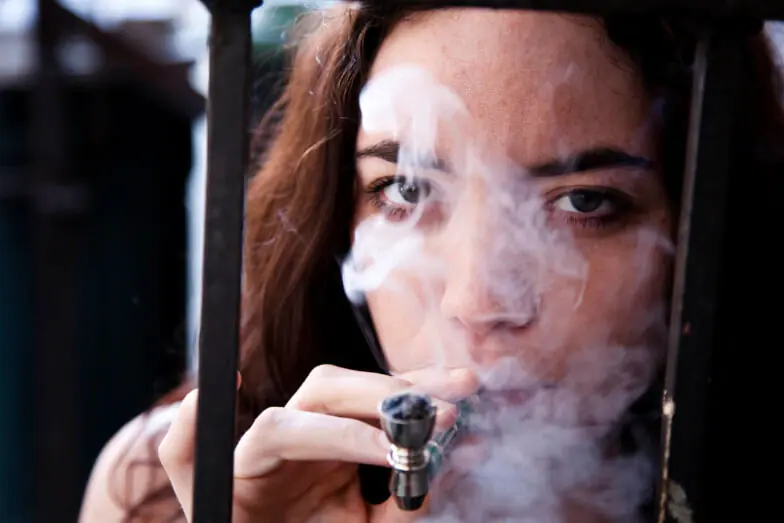


If quitting smoking is an impossible task for you, then in cosmetics and food, rely on products rich in antioxidants that neutralize nicotine well. In this case, your face will not turn gray.
Or maybe there are other reasons:
You're eating wrong
You eat whatever you can, whenever you have to. You eat up before going to bed. Do you like to eat on the go? But have you forgotten that a person is what he eats? We are all literally made up of what we eat. You can't joke about this.
You torture yourself with starvation diets
A slender figure is, of course, good, but with a gray complexion it will be of little use. Try not to depend on new-fangled diets and get everything you need from food, even if it adds a little fat to your thighs.
You're addicted to coffee
Excess caffeine ages the skin and makes it dull.
Do you like strong drinks?
For your skin color to acquire one of 50 shades of gray, regular drinking of “harmless” light beer is enough.



You're overwhelmed by stress
You live a life filled with stress, nervousness, and unnecessary experiences. Here, perhaps, you cannot do without a psychologist. It will help you reconsider your priorities, remove everything that puts too much pressure on your psyche, and at the same time makes your skin color look bad.
You sleep little
You don't get enough sleep, you go to bed too late. This disrupts the natural cycle of skin regeneration, and the face turns grey. It is not difficult to fix such a problem. Just take a bath before bed, walk in the fresh air and go to bed no later than 11.
You are "hypodinam"
You have fallen victim to the epidemic of the digital age - a sedentary lifestyle, or scientifically speaking, physical inactivity. This means that due to long periods of sitting, your spinal and cervical nerves are compressed and the blood supply to your head is disrupted. Massage helps solve this problem. You'll also have to go on a low social media diet. Well, put your body to work - do exercises, jog in the morning, visit the “rocking chair”: then the color of your skin will become “sexy” again.



You're in love with a tan
You overuse artificial and natural tanning. Excess ultraviolet radiation makes the skin flabby, covers it with senile pigmentation, dehydrates and deprives it of freshness.
You don't take care of your skin enough
Start using moisturizers regularly and use suitable tonics. Don't forget to protect your skin from the sun's ultraviolet rays. At least once a week, clean it with scrubs to remove all dead particles and remove excess sebum. Be sure to apply whitening and nourishing masks.
It is advisable to turn to professionals. They might recommend:
Chemical (superficial) peeling. Chemistry in this case is various acids (fruit, glycolic, enzyme).
Ultrasonic peeling. Ultrasound removes dead cells absolutely painlessly.
Facial massage. It will eliminate tension in the occipital and cervical areas, make the skin more elastic, and restore its normal tone.
Ozone therapy. Thanks to this procedure, the skin is well saturated with oxygen.
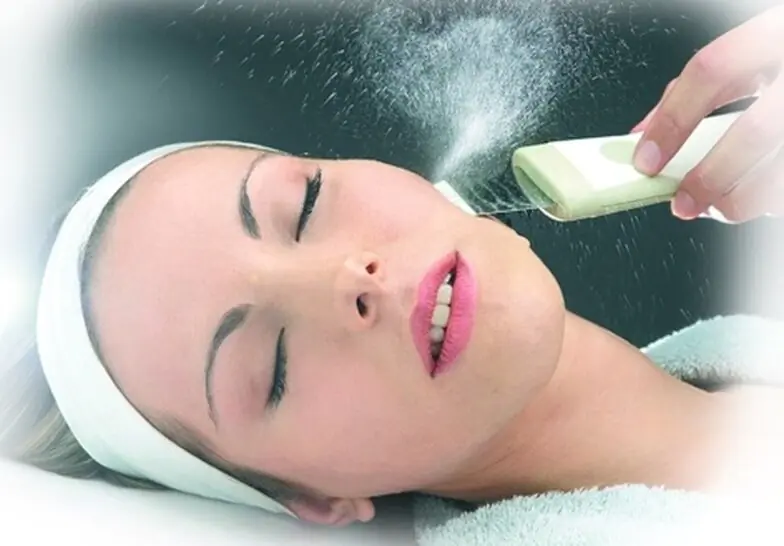


Ultrasonic peeling can restore beauty to the skin
Always remove all makeup before going to bed. And in the morning, before applying makeup, be sure to use some kind of toner.
Old age and winter
Winter is unmerciful to the skin: the cold wind dries them out, and the radiators in warm rooms do the same. Lack of sun rays and vitamin deficiency complete the matter.
Or maybe you're just getting old. Cell regeneration slows down, menopause sets in, the skin becomes drier, its color fades... But life goes on. The beauty and wellness treatments just mentioned will help you rejuvenate your skin.
Don’t try to “disguise” the grayness of your face with blush or foundation. This will be of little use, and in addition, the skin will begin to peel off, and yellowish pigmentation may appear.
Diet against gray color
Products with vitamin A. There is a lot of it in fatty sea fish, eggs, milk, carrots and citrus fruits.
Foods that contain a lot of vitamin E include nuts, oats, vegetable oil, soybeans, corn and peas.
Consumption of ascorbic acid (vitamin C).
Also, be sure to drink at least 1.5 liters of water per day.
(6−8 glasses). It is best that it be mineral and not boiled tap water. It is advisable to drink green tea extract.
Remove sausages, mayonnaise, hot spices and fried foods from your diet. Don't drink sparkling water. For sweets, give preference to natural products, such as honey and chocolate. But exclude lollipops and cream cakes from your diet.
Folk remedies
All the means are not what is in this article; even the average person cannot fit a digital library. Therefore, below are just a few of the most effective ones.
Carrot mask
Grind a little carrot on a fine grater.
Mix one tablespoon of it with an egg yolk and a spoonful of just prepared mashed potatoes.
Apply the resulting mixture to your face.
Rinse off with lukewarm water after 20 minutes.
And finally, you wash your face (with cool water).
Black tea
Add a teaspoon of black tea to a glass of boiling water.
In the resulting drink you put a few rowan berries (dried) and a couple of nettle leaves (also dried).
After 20 minutes, strain.
Wash your face with the resulting tincture every day for 2 weeks.
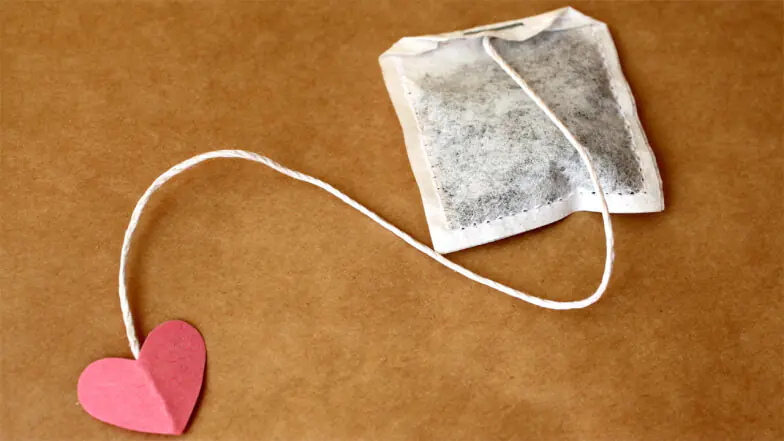


Beer mask
Mix a quarter glass of heated beer with one egg yolk.
Add one tablespoon of potato flour and the same amount of grated carrots to the mixture.
Apply the resulting porridge-like mass to your face for 20 minutes.
You wash it off (preferably with warm beer) and rinse your face with cool water.
Peach mask
Mash the pulp of a ripe peach and mix with a teaspoon of oatmeal. If your skin is very dry, add a teaspoon of vegetable oil.
Apply the resulting creamy mass to your face.
After half an hour, wash off with lukewarm water.
These folk methods will return your face to its natural beauty, freshness, shine and smile.



